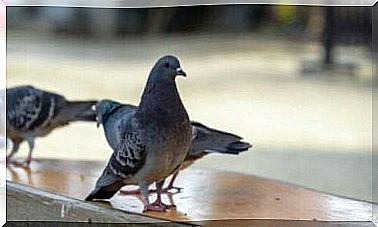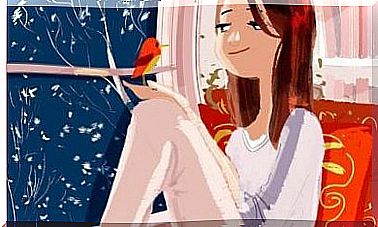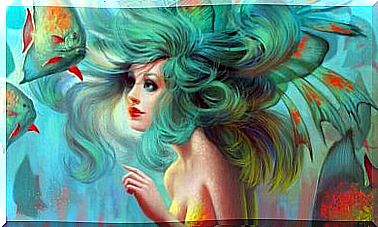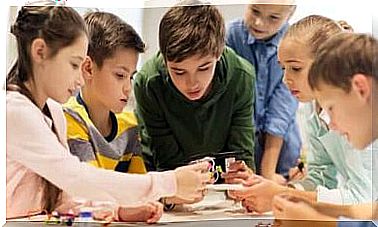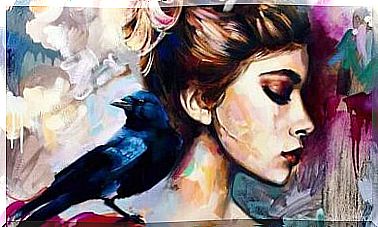Children’s Drawings: Stages And Development
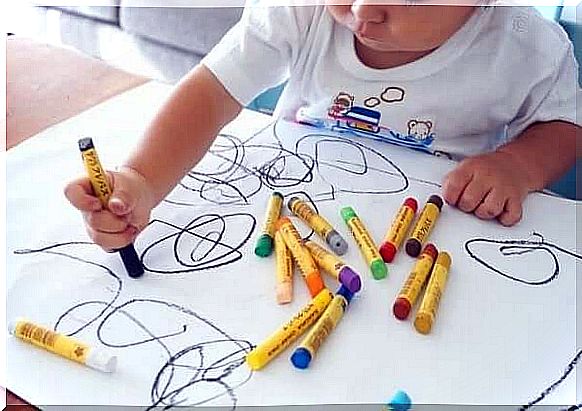
Children love to draw and it is a way for them to express their reality. They can choose to interpret something from their imagination or how they see the world. If we look at the children’s drawings, we see how they see the world.
The relationship between the images that are in the child’s mind and their drawings is a very close one. The mental images are internalized imitations, but they come out in the drawings.
If we examine the qualitative development of children’s drawings, we can therefore gain a better understanding of their symbolic capacity.
Stages in the children’s drawings
In this article, we will talk about studies that Luquet conducted regarding the development of children’s drawings.
First, he said that a child’s drawings are realistic. The reason for this is that children are more focused on the properties of reality than its artistic beauty.
The stages of children’s drawings are: unplanned realism, failed realism, intellectual realism and visual realism.
Unplanned realism
Starting to draw is an extension of the child’s motor skills. That is why a child’s first creations will always be “graffiti”.
This graffiti is its first experiment with motor skills and forms the basis for the coming stages.
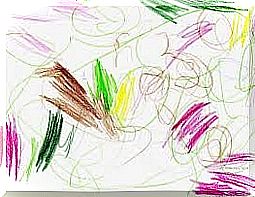
Very soon the child begins to find similarities with his drawings and the reality around it. It will often try to catch it, even if it lacks the ability to do so.
If you ask what it draws, it may first say “nothing”, but as soon as it finds a similarity between the drawing and reality, the drawing will be a true representation.
This stage is called unplanned realism because the representation of reality comes after or while the drawing is being made. There was no real intention to draw what it eventually became.
The resemblance is a coincidence, but the child welcomes this fact with enthusiasm. When it sees the similarity, it can actually try to improve it.
Failed realism
At this stage, the child is trying to draw something she has in her mind. However, due to some obstacles, this leads to frustration and failure. The main obstacle is her motor skills.
It is not developed enough to provide the precision required to recreate what the child wants. Another problem is the child’s attention. She is not attentive enough and overlooks important details.
According to Luquet, the most important aspect of this stage is the “synthetic inability”. This is the child’s difficulty in organizing, arranging and orienting the elements in the drawing.
When drawing, the relationship between the different elements is very important. Proper organization of these elements is what makes the drawing more or less successful.
At this stage in development, however, children have problems with this. If they draw a face, they can, for example, place their mouth above their eyes.
Intellectual realism
At this next stage, the child has overcome the obstacles in the earlier stage. Nothing now prevents it from drawing something that is more or less realistic.
However, it is important to point out that childhood realism is not similar to adult realism. The child does not capture reality as he sees it, but as he knows it to be. That is why Luquet calls this stage intellectual realism.
This is possibly the stage that best represents the child’s drawings. It is also the most interesting thing when it comes to research and studies.
During this stage, we see two important characteristics represented: ” transparency ” and ” avoidance “.
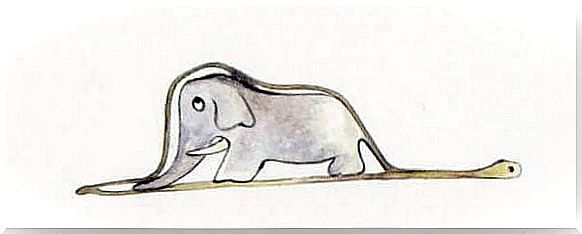
When we talk about transparency, we refer to the fact that the child draws things that are hidden. They can remove what obscures certain objects and make them transparent.
For example, they draw a chicken inside an egg or feet inside the shoes.
The second process, avoidance, consists of the children ignoring the object’s perspective. An example of this is to draw the facade of a house vertically but the rooms inside as seen from above.
These two characteristics show us how visual factors are not relevant when expressing things in drawings. Instead, the child refers to his mental representation and tries to capture what he knows in his drawings.
This is why “errors” appear, such as transparency in opaque objects or lack of perspective in certain things.
Visual realism
From the age of eight or nine , a child can draw almost like an adult. Now the child can draw the reality as she sees it. To do this, the child follows two rules: perspective and following the visual model.
The characteristics of intellectual realism disappear completely. They eliminate invisible objects, adopt a single perspective and maintain proportions in dimensions.
Now they embrace visual realism. Thanks to this, the children’s drawings lose their childish appearance. Many children begin to lose interest in drawing because they feel that it never looks realistic enough.
We should mention that although one can often see these stages in the child’s drawings, we must be careful. Since the development is not as linear as we think, there will be some that are more advanced than others.
Some children find it difficult to draw and will use the strategy at an earlier stage, but it does not matter.

